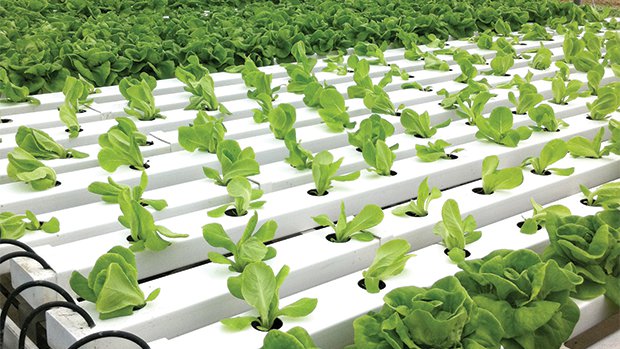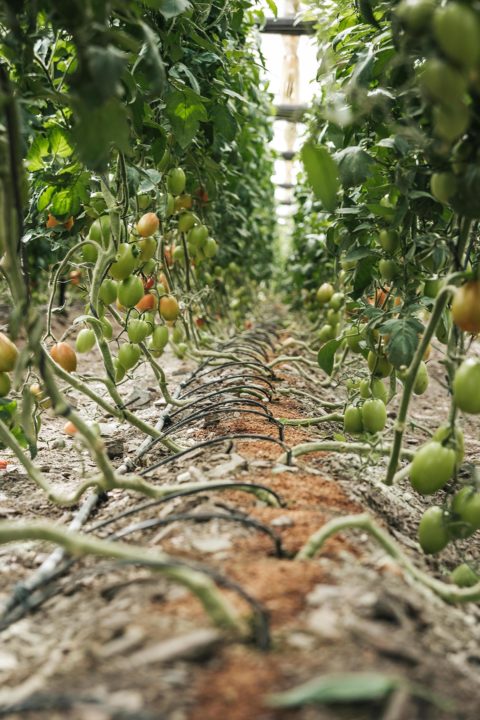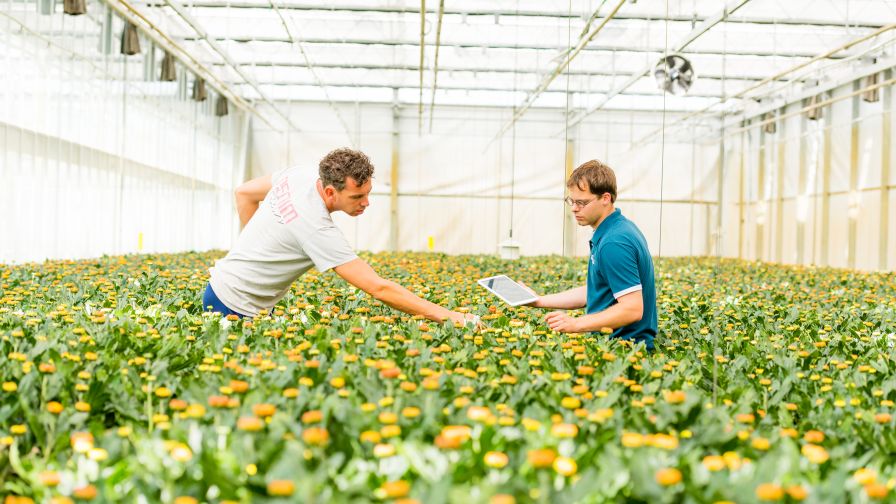Ornamental Greenhouse Growers Must Do Their Homework When Shifting To Vegetables

Increased customer demand led Good Harvest Farms to add hydroponic lettuce in 2000.
Good Harvest Farms in Strasburg, PA, has been growing both ornamentals and veggies since it first opened in 1990. But according to owner Chris Powell, it wasn’t until it added hydroponic lettuces and herbs in 2000, and began selling at a local farmers’ market, that the veggie side of the business really took off.
“It was all about demand,” Powell says. “We started going to a farmers’ market outside of Philadelphia year-round for three days a week. Whenever we had our own homegrown lettuces and herbs, we noticed that we sold a lot more than when we were selling what was shipped in from another location.”
Powell recalls one December when there was a huge demand for lettuce during the holidays, and the operation wasn’t able to produce enough of it.
“That was when we decided to make a huge investment in hydroponics to take care of our customers,” he says.
Veggies Helped Fill Many Needs
Today, about 90% of Good Harvest’s hydroponic production is in lettuce, along with some herbs and other greens.
“There was almost no one doing lettuce at the time we started, so that’s where we turned first,” Powell says.
Fifteen years later, lettuce and greens have become profitable for the business, even when quality isn’t as high as Powell would like.
“We make a few spring mixes with our second-quality heads, where the freshness is there, but it might be misshapen or smaller,” he says. Because of that, there is almost zero waste. Powell cites other benefits as well, such as low inputs for growing, and a high return at the market.
Hydroponic tomatoes and peppers were an option, but Powell says that aside from Good Harvest’s high tunnel production of these crops, it was in its best interest to leave it to other neighboring farmers.
“We didn’t think we could do it better or cheaper, and our philosophy is if there’s a product we can’t get good quality on, we’ll let others handle it.”
The other benefit from turning to greenhouse-grown lettuce is that it helps Good Harvest fill a summer window that Powell felt was lacking.
“We had the ornamental space open in the greenhouse during certain times of the year, because we weren’t doing summer ornamental crops, and it was too early for poinsettias,” he says. “We were also looking to increase walk-in traffic at our garden center during the summer, and lettuce and herbs were a great way to make this happen.
Know Your Market Before Making The Jump
One of the biggest things Powell says he learned in expanding Good Harvest’s lettuce production is that quality matters greatly. Because of that, Powell investigated closely what he needed to do before jumping in.
“We talked to a lot of people both here in the U.S. and in New Zealand and Australia, where they’d been doing it for years and have gotten the bumps out of it,” Powell says. “We learned a lot from other people’s mistakes.”
Powell also learned the importance of water quality.
“I would highly recommend that if you are new to hydroponic lettuce, to study it and make sure the water you are using is okay to grow with,” he says.
In addition, even though Good Harvest is small enough to fall underneath most of the new food safety standards and guidelines, Powell says the business is proactive in following many of the same rules.

Make sure you have a market before investing in hydroponic lettuce.
“Since we sell direct, it makes sense for our customers,” he says.
For those looking to jump into greenhouse lettuce and veggie production, Powell says his top suggestion is to make sure you have a market before you invest in it.
“We’ve seen some farmers in our area grow basil in greenhouses, and even though they did it well, they didn’t have a market for it and had to finally quit because it wasn’t profitable for them,” Powell says. “Hydroponic lettuce isn’t cheap to grow, and you need to find customers who realize the lettuce is homegrown and local, so it should be worth more than paying for something shipped to a grocery store.” In other words, there’s a perceived value that you need to be willing to emphasize.
Once you’ve identified the market, Powell says the next step is to look for ways to improve efficiencies in energy and labor.
“We designed the greenhouse with rolling benches, and our gutters were designed to be able to take in and out for harvesting,” Powell says. “Our aisles are also wider for equipment to come in and out for harvesting.” Good Harvest also updated its computer controls for heating, fertilizer applications, and water treatment.
Powell points out that one of the biggest changes he noticed when transitioning from ornamentals to lettuce was nutrition.
“Ornamentals certainly need a correct nutrient feed, but when you’re growing lettuce, your flavor, appearance, days to harvest, nutrition and water quality all have to be dialed in perfectly,” Powell says.
At this point, Good Harvest has no immediate plans for future expansion.
“We’re always looking two or three years ahead, but right now we don’t see many changes on the horizon, mainly because we’re satisfied with our production and what we do now is profitable and works great,” Powell says. “If we see a shortage in other crops, we might look in that direction, but we want to make sure we do it right.”
Building Trust With Your Customers
When Powell and his team at Good Harvest made the shift to greenhouse lettuce production, one of the things they quickly learned was the importance of establishing trust with their customers.
“They wanted to buy fresh, sustainable produce, but didn’t always know what that meant, so they would ask us,” Powell says.
To help alleviate some of those concerns, Good Harvest began hosting a “farm day” where it invites its customers to the farm, and demonstrates farming practices, both in the greenhouse and outside.
“They get to see what a real farm looks like, and they get to know me, our crew, and our family,” Powell says. “It helps build a lot of trust. That’s perhaps the biggest marketing step we’ve taken for our farm.”










